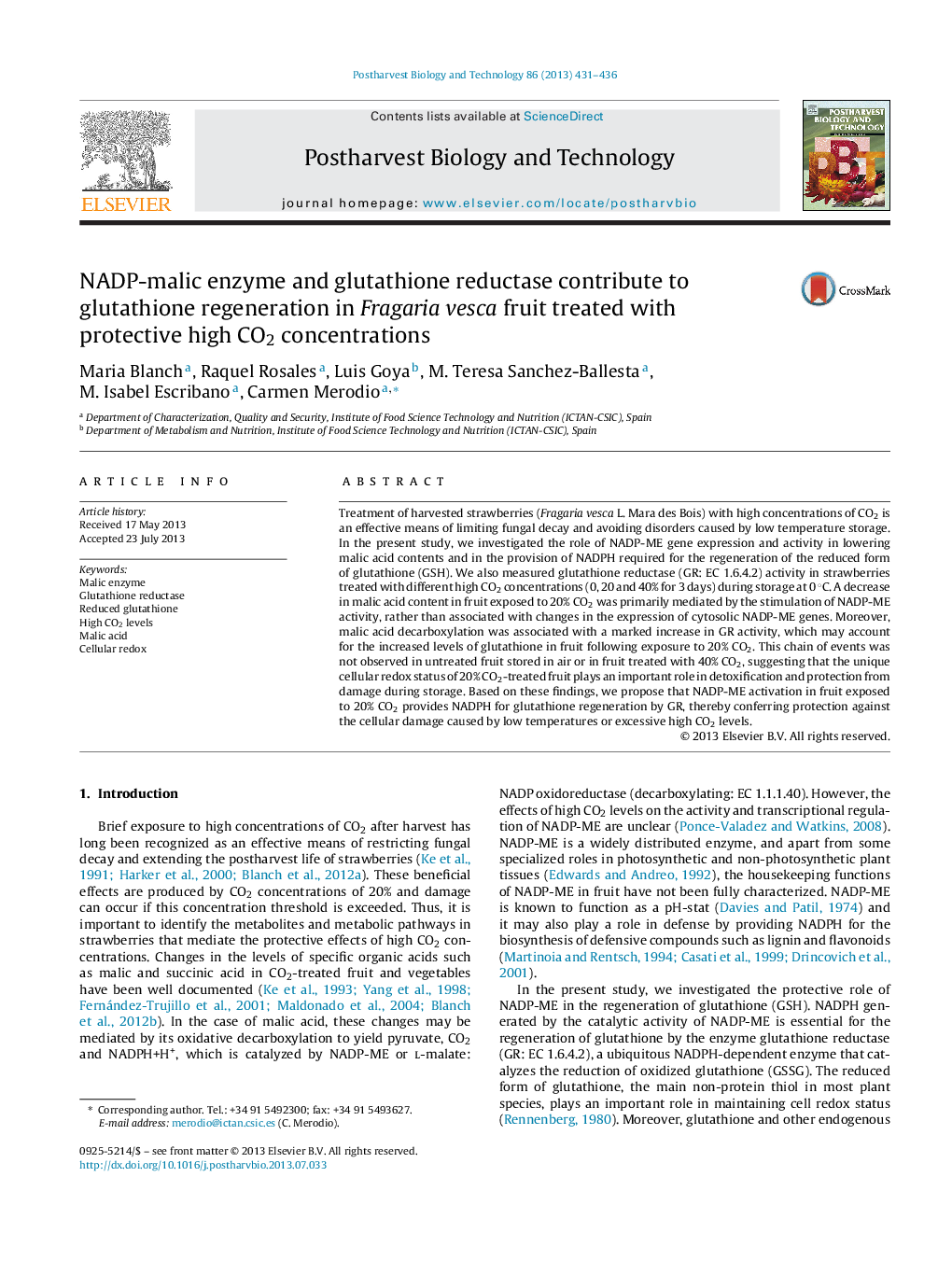| Article ID | Journal | Published Year | Pages | File Type |
|---|---|---|---|---|
| 6378812 | Postharvest Biology and Technology | 2013 | 6 Pages |
Abstract
Treatment of harvested strawberries (Fragaria vesca L. Mara des Bois) with high concentrations of CO2 is an effective means of limiting fungal decay and avoiding disorders caused by low temperature storage. In the present study, we investigated the role of NADP-ME gene expression and activity in lowering malic acid contents and in the provision of NADPH required for the regeneration of the reduced form of glutathione (GSH). We also measured glutathione reductase (GR: EC 1.6.4.2) activity in strawberries treated with different high CO2 concentrations (0, 20 and 40% for 3 days) during storage at 0 °C. A decrease in malic acid content in fruit exposed to 20% CO2 was primarily mediated by the stimulation of NADP-ME activity, rather than associated with changes in the expression of cytosolic NADP-ME genes. Moreover, malic acid decarboxylation was associated with a marked increase in GR activity, which may account for the increased levels of glutathione in fruit following exposure to 20% CO2. This chain of events was not observed in untreated fruit stored in air or in fruit treated with 40% CO2, suggesting that the unique cellular redox status of 20% CO2-treated fruit plays an important role in detoxification and protection from damage during storage. Based on these findings, we propose that NADP-ME activation in fruit exposed to 20% CO2 provides NADPH for glutathione regeneration by GR, thereby conferring protection against the cellular damage caused by low temperatures or excessive high CO2 levels.
Related Topics
Life Sciences
Agricultural and Biological Sciences
Agronomy and Crop Science
Authors
Maria Blanch, Raquel Rosales, Luis Goya, M. Teresa Sanchez-Ballesta, M. Isabel Escribano, Carmen Merodio,
